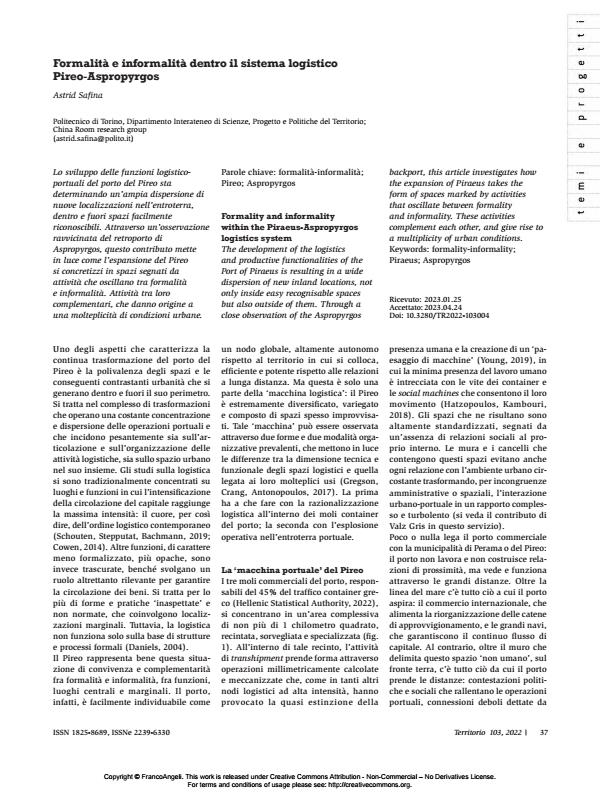Formalità e informalità dentro il sistema logistico Pireo-Aspropyrgos
Journal title TERRITORIO
Author/s Astrid Safina
Publishing Year 2023 Issue 2022/103
Language Italian Pages 5 P. 37-41 File size 285 KB
DOI 10.3280/TR2023-103004
DOI is like a bar code for intellectual property: to have more infomation
click here
Below, you can see the article first page
If you want to buy this article in PDF format, you can do it, following the instructions to buy download credits

FrancoAngeli is member of Publishers International Linking Association, Inc (PILA), a not-for-profit association which run the CrossRef service enabling links to and from online scholarly content.
The development of the logistics and productive functionalities of the Port of Piraeus is resulting in a wide dispersion of new inland locations, not only inside easy recognisable spaces but also outside of them. Through a close observation of the Aspropyrgos backport, this article investigates how the expansion of Piraeus takes the form of spaces marked by activities that oscillate between formality and informality. These activities complement each other, and give rise to a multiplicity of urban conditions.
Keywords: formality-informality; Piraeus; Aspropyrgos
- The (in)visible face of global infrastructures: An exploration of logistics and informality from the ground up Astrid Safina, in Environment and Planning D: Society and Space /2025 pp.834
DOI: 10.1177/02637758251319671
Astrid Safina, Formalità e informalità dentro il sistema logistico Pireo-Aspropyrgos in "TERRITORIO" 103/2022, pp 37-41, DOI: 10.3280/TR2023-103004